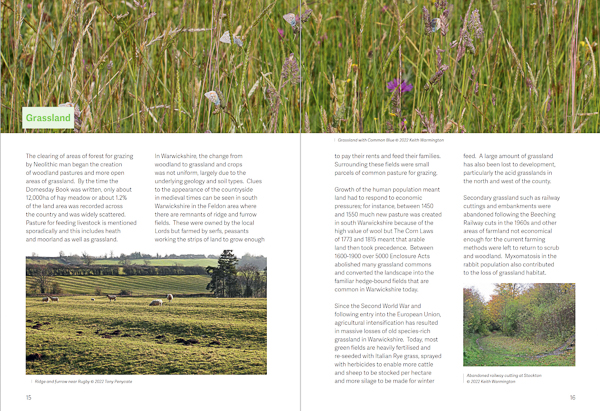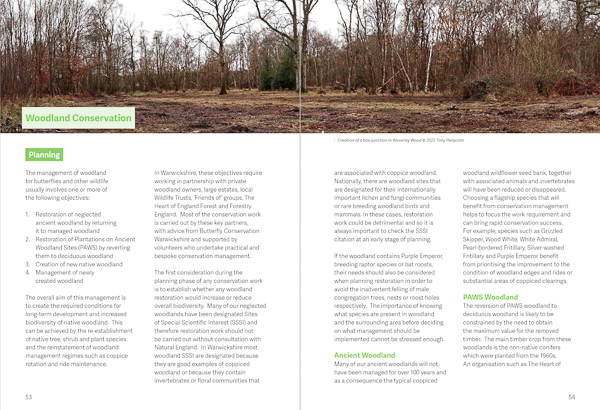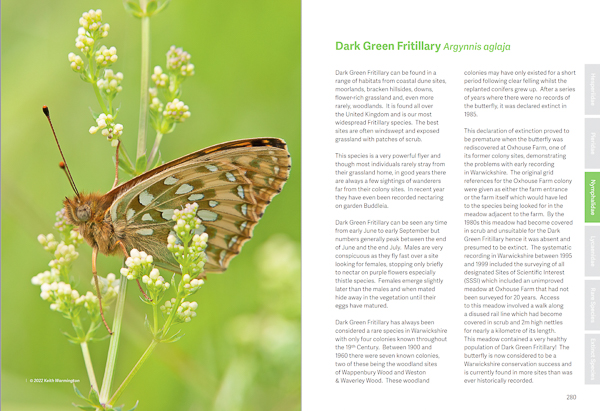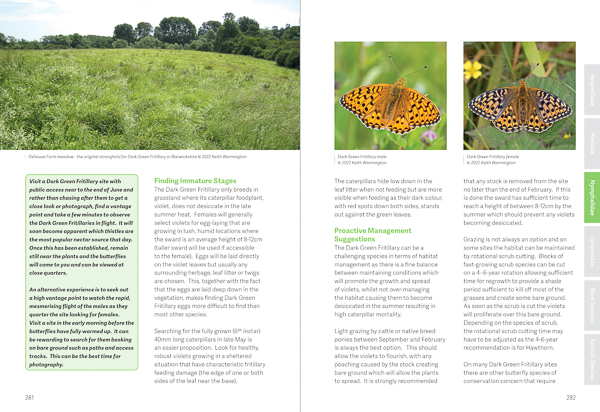 |
by Mike Slater and Keith Warmington.
This book documents, celebrates and shares the many successes the Warwickshire Branch of Butterfly Conservation has had in conserving our rarer butterflies over the past 25 years. It is a manual of techniques, tips and ideas that will help and hopefully inspire others to create and manage habitats and to conserve butterflies.
In addition, the book outlines the fieldcraft that is required to provide the best chance of finding adult butterflies and their immature stages, provides tips on how to identify the difficult species and suggests how to get the maximum enjoyment from your butterfly encounters.
Make no mistake, this is an important book that raises the bar when it comes to understanding how to practically conserve our butterfly fauna. Written by two stalwarts of the Warwickshire branch of Butterfly Conservation, Mike Slater and Keith Warmington, this is an essential read. And while the book is focused on the experiences of conserving those species found in Warwickshire, the general approaches and lessons learned can be applied far and wide.
The book is roughly in two parts, with the first part focused on butterfly monitoring and the conservation in different types of habitats, and the second part providing accounts of the species found in Warwickshire. Both parts are liberally sprinkled with conservation insights from the authors, with lavish images included throughout. The book is well laid out, with the overall presentation, especially the balance of text and images, making for an enjoyable read.
Following a discussion of Warwickshire’s countryside, the book then moves onto the topic of recording where different approaches are summarised, including transect methods and timed counts with which many readers will be familiar. However, this section also introduces the need to think differently for canopy dwelling species, such as the Purple Hairstreak, and I had the good fortune to attend a workshop on this species a few years ago, where Mike Slater presented his thoughts on how to monitor this species. The monitoring he outlined has now been embraced more widely within Butterfly Conservation branches.
Following a description of various case studies, the book moves on to the area where I think it really shines, namely a comprehensive discussion of conservation management techniques. Like many, I’m sure, I was already aware of some techniques, such as coppicing in woodland, scrub removal in grasslands, the creation of chalk scrapes and so on - but this is the first time I’ve seen all the various techniques, aligned with the different types of habitats, really spelled out in such a concise and clear form. This section is organised around the main habitat types found in Warwickshire - namely woodlands, hedgerows and grasslands. The discussion of each of these habitats is nicely structured in terms of planning, implementation, restoration or enhancement, and aftercare. Each section also contains several case studies that bring the various techniques to life. There is then a summary of 10 sites specifically managed by the Warwickshire branch.
 |
 |
 |
The second part of the book then provides accounts of the various species found in Warwickshire, with a twist - namely the emphasis on the conservation management appropriate to each species. Each species account has tips on how to find the immature stages of egg, caterpillar and chrysalis, along with ‘proactive management suggestions’ and, of course, the occasional case study. Given the geographic focus of the book then it is inevitable that some species are not discussed - such as the Duke of Burgundy, which was declared extinct in the county in 1987. That does, however, leave the 40 species that are discussed, and I do hope that others will follow suit by taking a similar approach to discussing the conservation of the remaining species.
 |
 |
The book concludes with a brief summary of rare species that have been found in the county, and also extinctions in the 19th and 20th centuries.
In summary, this is a book about the practical application of conservation management techniques. Whether you’re involved in the management of a particular site or habitat, or focused on a particular species, then this book has it all. My hats off to the authors for trailblazing what I view as a ‘first of a kind’ work and I hope that many more follow. The more practice that is shared, the better it will be for our butterfly and moth fauna. I know I’ll be referring back to this book regularly and, as such, it is highly recommend.